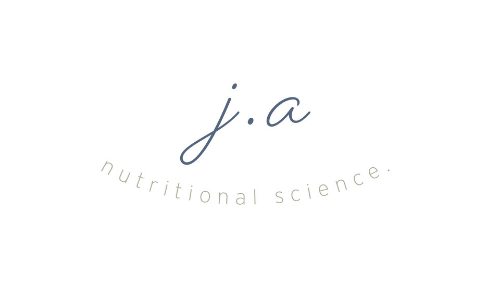
The Pros & Cons of Intermittent Fasting
Intermittent fasting, in which individuals fast periodically, is a popular diet pattern across the world for its potential to greatly affect physical health. But is it suitable for everyone?
Here, I will delve a little deeper into the most popular methods of fasting, plus the benefits and the pitfalls from both the science and my personal experience.
What is Intermittent Fasting?
Intermittent fasting is an eating pattern that cycles between alternating periods of eating and fasting.
Many people use intermittent fasting as a tool for weight loss, but there are many more mechanisms involved than simply reducing body fat.
Summary
Intermittent fasting is an eating pattern that includes regular, short-term fasting. Intermittent fasting has potential benefits for weight loss, preventing disease and overall health and well-being
What are the benefits?
Emerging research is revealing cellular and molecular mechanisms by which intermittent fasting increases the resistance of cells, tissues and organs to stress and common illness associated with ageing and sedentary lifestyles.
Intermittent fasting has been shown to help normal weight and overweight individuals to lose weight, and reduce the risk of diabetes and cardiovascular disease.
There are various studies showing the benefits of intermittent fasting including:
- Reducing inflammation in the body
- Improving blood sugar control
- Maintaining muscle mass whilst reducing fat mass
- Anti-depressant effects
- Improving cognitive function
- Improving heart health, blood pressure, triglycerides, & cholesterol
Different Intermittent Fasting Methods
The different types of intermittent fasting include modified fasting regimens, complete alternate-day fasting, and time-restricted feeding.
The 5:2 Method
The 5:2 diet was my first introduction to intermittent fasting, made famous by Dr Michael Mosley. This method allows for eating normally five days per week, with the other two days fasting, eating 500 calories (women) and 600 calories (men).
A common and appealing feature of the 5:2 method is that you don’t have to restrict calories every day. This method does not benefit everyone equally. A common complaint and one that I experienced personally, was the severe disruption of my sleep on fasting days.
Time-Restricted Feeding (TRF)
This is one of the most popular methods of fasting. TRF refers to an eating pattern in which food intake is restricted to an ‘eating window’, usually 8–10 hours or less every day.
Most people can achieve a 16/8 quite comfortably, where they are fasting for 16 hours and consuming calories within an eight-hour eating window (for eg. eating only between 12 pm – 8 pm).
Alternate Day Fasting (ADF)
This refers to eating only every other day. On fasting days, some people will eat no food at all whilst others may stick to eating around 500 calories.
In a 2015 review, alternate-day fasting of 3 to 12 weeks in duration appears to be effective at reducing body weight (≈3%-7%), body fat (≈3-5.5 kg), total cholesterol (≈10%-21%), and triglycerides (≈14%-42%) in normal-weight, overweight, and obese humans.
What are the pitfalls of fasting?
Some studies have found that fasting for women is not as beneficial as it is for men. Women’s bodies and metabolism respond differently to periods where there is persistent food scarcity.
Women are very sensitive to nutrient deprivation, and when on a prolonged IF protocol may see a reduction in thyroid output, a decrease in estrogen, and other adverse hormonal effects. Pair this with women who exercise, and it could bring about menopausal-like effects as well as powerful cravings.
There is suggestion that excessive calorie restriction in women (<500 calories per day) may cause hormone dysregulation, with women experiencing the cessation of menstruation and increased cortisol (our stress hormone).
We still don’t know the long term effects of intermittent fasting on women. Women may benefit from alternate day fasting, or fasting on fewer days with a larger eating window, over daily TRF.
People often question the effects of intermittent fasting on retaining muscle mass. A recent review found that intermittent fasting paired with resistance training maintains lean body mass, whilst promoting fat loss. Maintaining adequate protein intake in your eating window is essential.
Fasting is a stressor on the body. If you’re already under chronic stress, continued fasting and elevated cortisol can lead to blood sugar dysregulation, insulin resistance, fatigue and disruptions to thyroid function.
Prolonged periods of fasting can place some people at risk of overeating or under-eating. I have seen this many times with clients where fasting leads to poor food decisions in the later part of the day or overeating on non-fasting days.
If you have type 2 diabetes, work with your doctor to determine if intermittent fasting is right for you. Under the supervision of your healthcare provider, and with appropriate personal glucose monitoring, intermittent fasting can be safely undertaken.
Other risks involved with long term fasting can include vitamin and mineral deficiencies, poor intake of fibre and lack of adequate protein for muscle synthesis.
Intermittent Fasting is not for Everyone
Who shouldn’t fast?
Whilst many people can benefit from fasting, there are certain groups that shouldn’t attempt to fast. These include:
- Pregnant women – calorie intake is important in the 2nd & 3rd trimesters where there is the rapid growth of the developing baby.
- Young Children – not recommended for the growth and development of children.
- Endurance athletes – athletes that train for extended periods have a greater need for calories and require a larger eating window. However, research has shown that fasting in the maintenance phase of training can be beneficial for recovery and repair.
- People with a history of eating disorders – restricted eating can encourage and trigger unhealthy eating behaviours in some people.
- Type 1 diabetics – the immediate risk of fasting are for those people with the potential for hypoglycemia and on anti-diabetic medications.
How to Intermittent Fast
- Choose a method to get you started – 5:2, ADF or TRE
- Organise a schedule — downloading an app like Zero can help keep you on track.
- Eat — in your eating window, ensure you’re eating good sources of fat & protein at each meal that you know you will enjoy.
- Experiment — be flexible, you may find different times work for you around your family, work, and exercise schedule.
- Go slow – if you’re finding it difficult fasting a full 14-16 hours start with a 12/12 approach. Then increase fasting by 1 hour gradually each day over a week or a month.
In a nutshell
Pros:
- It’s easy to do — just restrict your eating window, unless your an endurance athlete there’s no need to count or track calories or keep food records
- Naturally reduces calories which can help with weight management
- Intermittent fasting may improve cellular and molecular health
- Saves time – by spending less time thinking about and preparing food
Cons:
- Not ideal for people with a history of eating disorders or have a poor relationship with food
- Prolonged fasting is not recommended for all women, especially of reproductive age
- If you’re already highly stressed, excess cortisol can make you feel worse and you won’t experience the full benefit’s of intermittent fasting.
If you are looking to reduce body fat and improve your molecular health intermittent fasting might be for you.
The best way to get started is to experiment. Choose a version that suits you and your lifestyle and see how you feel.






